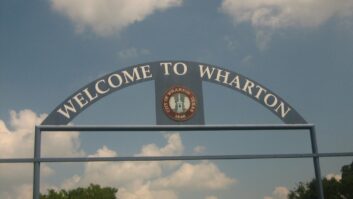WASHINGTONThe FCC has reiterated how stations that use IBOC technology can seek permission to split their digital signals into several channels.
While falling short of a blanket authorization sought by National Public Radio, experts said the clarification is a clear public signal from the FCC that stations are free to apply for multi-channel operations as experimental licenses – quite a feat given that this was one of several broadcast items the commission staff handled before the exit of Chairman Powell in March.
NPR stations involved in the multi-channel effort, dubbed the Tomorrow Radio project, first sought experimental authority to split their digital signals a year ago; slowly, more have begun to do so. But project participants sought some assurance from the commission that it would not block stations from splitting digital signals, in order to provide confidence to stations and transmission and receiver manufacturers.
The clarification is important because experts believe the potential revenue to be generated from the data services associated with IBOC, such as multicasting, may be the return on investment stations are looking for to recoup their investment in digital equipment.
Still to be determined is whether the commission would apply ownership or programming restrictions to supplemental channels. But its action was regarded by observers as a signal the FCC would not prohibit the general concept. Supporters, NPR in particular, can use the development as a “carrot” to entice receiver makers and other HD Radio data gear and software vendors.
However, an agency official was careful to point out to Radio World that the FCC is endorsing neither HD Radio nor the multi-channel concept, but rather facilitating them.
Nor has the commission restricted the type of stations that may choose to split their digital signals, thus leaving the option open for commercial, non-commercial and even AM stations, should they like to try the concept – although most experts believe FM frequencies are more suitable for the lower bit rates involved.
“NPR and public radio stations have embraced the digital transition and we eagerly await formal approval of expanded HD operations in the next several months,” said Michael Riksen, vice president of NPR government affairs.
Recognition
In a Public Notice in March, the commission noted that “several” public radio stations have tested the concept.
“We … recognize that the extremely encouraging Tomorrow Radio test results establish the feasibility of multiple audio transmissions in the hybrid mode,” stated the agency.
NPR doesn’t have an exact count of how many stations are multicasting digital signals, although Mike Starling, vice president of engineering and operations, listed several FMs, including the initial four Tomorrow Radio test stations: KALW, San Francisco; KKJZ, Long Beach, Calif.; WETA, Washington; WNYC, New York; as well as four others, WAMU, Washington; WOSU, Columbus, Ohio; KUOW, Seattle; and KAZU, Pacific Grove, Calif.
“We expect a strong number of applications to come into the FCC based on (the) announcement, probably in the dozens,” Starling said.
NPR, Harris and Kenwood partnered on the Tomorrow Radio concept, supported by their own money and funding from the Corporation for Public Broadcasting. Total testing costs were estimated to be “several million dollars” by the partners when testing began.
CPB funded the original four market test programs with $500,000 and a second $700,000 grant last summer to document the quality achievable with multiple music and voice program channels, host compatibility using extended hybrid carriers and expanded data collection to support propagation and coverage predictions.
For its stations that have multicasting authority, NPR is finalizing a test collection package for producing detailed coverage maps, similar to data collected for the first phase of the Tomorrow Radio project, Starling said.
“The data will be instrumental in quantifying the coverage tradeoffs associated with adjacent-channel stations and terrain anomalies.”
Boston Acoustics and Kenwood plan to have HD Radios on the market this spring that support supplemental digital channels. Kenwood predicts availability this month.
Starling said NPR received five responses from receiver makers to its recent request for proposals for multi-channel radios for a potential 50,000-unit group purchase. The network hopes to make a selection by June.
Grants, coverage
NPR planned to ask CPB to include transmission equipment needed for multi-channel, such as the so-called Gen 2 exporter and importer, in its digital conversion funding grants.
Harris and Broadcast Electronics have said they’re ready with products to support multi-channel.
To apply for an experimental authorization, stations may file an informal application, such as a letter. The FCC staff normally approves such requests within a week, the agency said.
NPR has a sample request form on its engineering Web site at www.euonline.org
“Given that the rollout is somewhat gradual, the FCC shouldn’t be too overwhelmed by these requests,” predicted Rich Redmond, director of broadcasts systems for Harris. “It’s not like 10,000 stations are going on tomorrow.”
While NPR had hoped the commission would expand the current digital notification procedures to include multicasting, the agency said that doesn’t fall within the current IBOC Report and Order allowing interim operation in the hybrid mode.
The commission expects to include more particulars about multicasting in a subsequent item on IBOC, due out later this year.
“A blanket STA would have been better because it would have removed the word ‘experimental,'” said a source close to the issue. “We have long ceased calling Tomorrow Radio experimental. But experimental authority is the only mechanism the FCC has without jumping through hoops to do this.”










